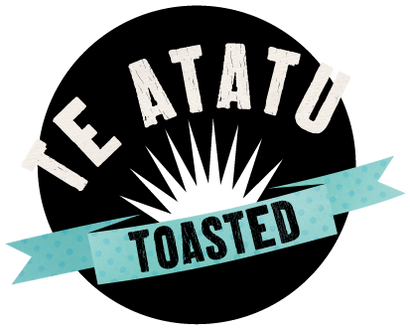Your Cart is Empty

Going gluten-free: tips for beginners – part one
March 03, 2022
Many of the newcomers to the Te Atatu Toasted community are buying our cereals because they want or need to follow a gluten-free diet. Our Gluten-Free and Paleo muesli blends and our Grain-Free Porridge (back in winter) are all gluten-free so we have your breakfast covered! But for more tips on going gluten-free, we asked Te Atatu Toasted fan Sheryl Blythen to share what’s she’s discovered after being diagnosed with Coeliac disease three years ago. Part one covers starting out and shopping for food.
Being diagnosed with Coeliac disease in my late 40s was a real shock for me – I’d battled digestion issues for some years and went through phases of eating low or no gluten foods but when faced with having to cut it out completely forever, it was a big adjustment. Here are some of the things I wish I had known. These tips are for people who need to completely eliminate gluten but many of them will be useful for people who are looking to reduce the gluten in their diet.
In the beginning…
- It’s ok to feel overwhelmed. Completely changing your diet is a big deal. But it will get better and easier as time goes on.
- Try to focus on the yummy things you can eat, rather than what you can’t eat. It helps with the FOMO.
- Gluten is an ingredient contained in wheat, barley, rye and oats. Get a handle on the common sources of gluten from Coeliac New Zealand’s guide on how to eat gluten-free.
- Learn how to read food labels – here is a good three-step guide. And remember, if in doubt, leave it out of your diet.
- Consider eating mainly naturally gluten-free foods at the start – fresh fruit and vegetables, unmarinated meat, poultry and seafood, nuts and seeds, legumes and most dairy products including milk, cheese, yoghurt, and butter fit into that category. At first gluten-free replacements for gluten-containing foods such as pasta, bread, biscuits etc might seem like a poor substitute. But after a while you will have forgotten how the real thing tastes and the gluten-free options will feel like a treat.
- It’s a good idea to have food you can eat with you when you are out because you can’t just walk into any café or dairy and grab something. It might just be a banana or a few almonds but it’s just an option if you are suddenly starving.
- Invest in some good portable food containers – there will always be places you have to go where there is no safe food and you will need to pack your own meal. Sports venues rarely have safe gluten-free options so whether you are a spectator at a professional event or just spending the day at a pool for the kids’ swimming carnival, it’s unlikely you will be catered for. Concerts, fairs and other big-crowd events often require you to BYO food.
- If you love bread, be prepared to spend time (and money) finding a gluten-free version you can tolerate. Often gluten-free bread products are better toasted than eaten fresh. Check out our Great Gluten-free Finds story for the best local options.
- Be aware that gluten hides in weird places. These are some of the things I was really surprised contained gluten – licorice, vegemite and marmite (you can get quite a good GF Sanitarium vegemite) malt vinegar (all other vinegars are ok), some stocks and flavourings, sauces (soy sauce is a no go unless the gluten has been removed) and natural confectionary. You have to break the habit of taking a lolly or a handful of chips if offered – if you can’t check the packet, don’t eat it.
Shopping
- Learn to look at ingredients on everything. We have really good labelling laws in New Zealand and food should always have allergens labelled. Anything that advertises its gluten free is safe but there are also lots of foods that are gluten free by ingredient.
- Stick to brands you trust – once you have found gluten-free options you enjoy from companies such as Te Atatu Toasted that take your safety seriously, you will tend to keep buying them. Your grocery bill will go up because gluten-free replacements often cost a bit more and you can’t just buy what’s on special, but your health will improve, and that’s invaluable.
- “May contain gluten” labels are a bit confusing. If there is no gluten in the ingredients this usually means they have been made in a factory where gluten is present. You have to decide how much risk you are willing to take. If the manufacturer is a reputable New Zealand company, you can probably assume their food handling practices will keep you safe.
- Some food manufacturers put “contains gluten” on products that don’t have any gluten in the ingredients which is also confusing (and annoying). There is a school of thought that they do it to prevent any risk of being accused of making someone sick if there is an accidental cross contamination in the factory. As you get better at reading labels you can make up your own mind about whether you will eat those products.
- It’s best to buy food in packets rather than out of those shared bins or even the shared meat fridge – crumbs from a chicken breast might have dropped on the steak
Next week part two of our Going Gluten-free Guide covers eating out and cross contamination.
